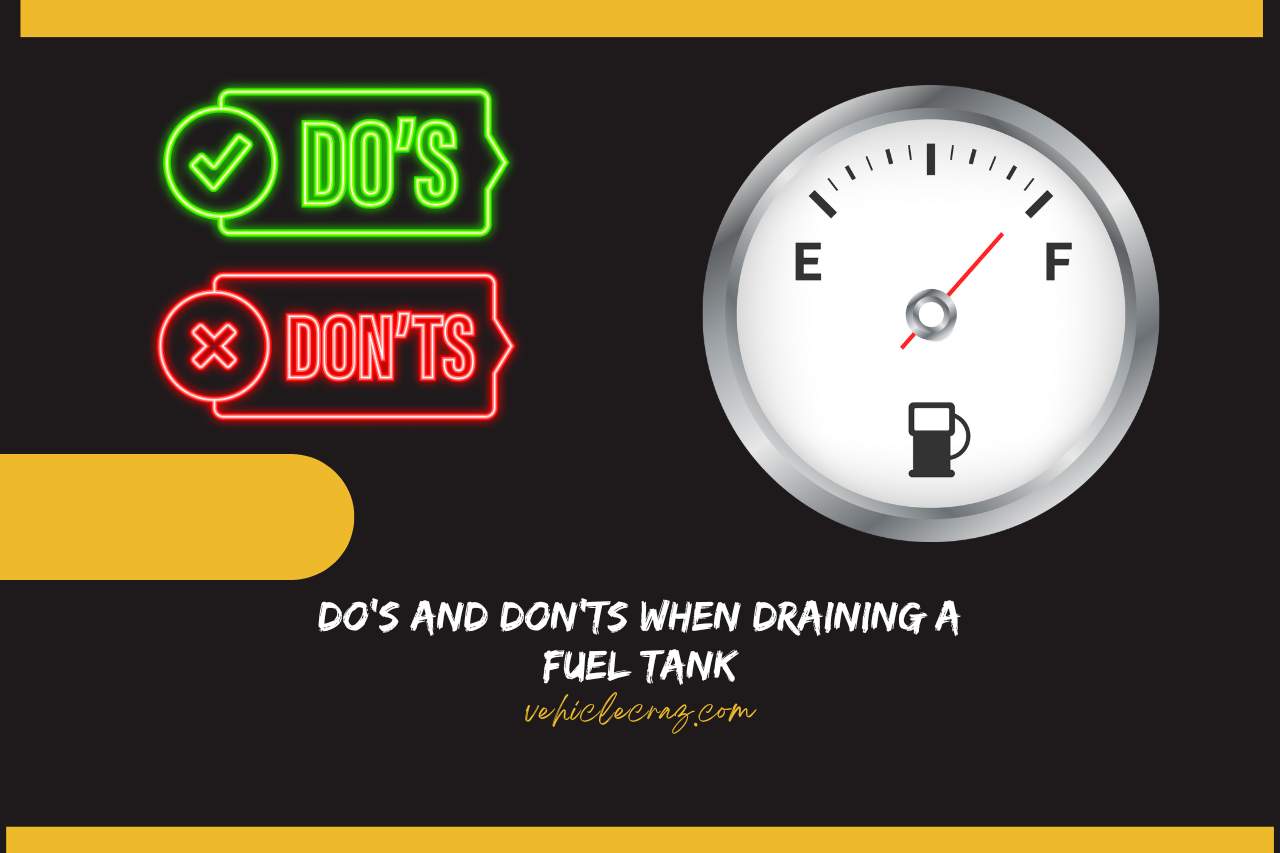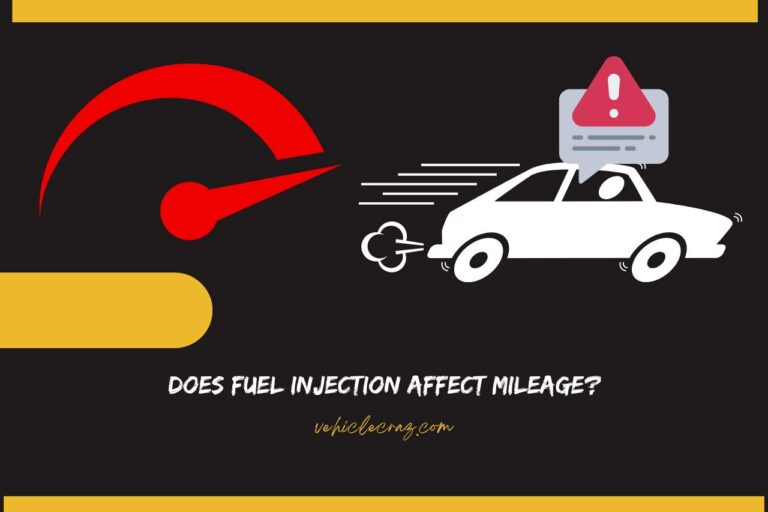How to Drain a Fuel Tank without Removing It? No Need for Removal!
Different circumstances will force you to drain your fuel tank, especially when there is contaminated fuel. But from where to start? You might think that it is challenging to drain the fuel tank completely without removing it. Do not worry; it is not necessary to remove the fuel tank for draining if you know the right techniques and have essential equipment. We will navigate you through the entire process of draining the fuel tank, along with do’s and don’ts. So, there is less chance for mistakes!
How to Drain a Fuel Tank without Removing It?
In order to drain a fuel tank without removing it, you can utilize various pumps. Here are the different methods in detail:
- Siphoning: Use a siphon pump or manually create a siphon by submerging one end of a hose in the fuel and sucking on the other end until the fuel flows. Redirect the hose into a suitable container.
- Drain Plug: Some vehicles have a drain plug at the bottom of the fuel tank. Locate the plug, typically near the tank’s lowest point, and use a wrench to open it. Then, allow the fuel to drain into a container.
- Disconnecting Fuel Lines: Locate the fuel line leading from the tank to the fuel filter or fuel rail. It is possible to disconnect the line and route it into a container. Turn on the ignition briefly to activate the fuel pump and facilitate draining.
- Using a Hand Pump: Attach a hand pump to the fuel line or a dedicated drain port if available. Then, pump the handle to extract fuel into a container.
- Using a Turkey Baster: If there is a small amount of fuel, a clean turkey baster can be used to extract fuel through the fuel filler neck. Check whether the baster is clean and suitable for handling fuel.
- Evaporation: In a safe and well-ventilated area, you can let the fuel evaporate over time. However, this method is time-consuming and not recommended for large quantities of fuel due to safety and environmental concerns.
- Professional Fuel Extraction Pump: Specialty fuel extraction pumps designed for removing fuel without tank removal are available. These pumps often have attachments to connect to fuel lines or filler necks. If you hire a professional for this job, he will use such equipment for thorough draining.
Before draining the fuel tank, always consult your vehicle’s manual for specific instructions and safety precautions. Additionally, consider seeking professional assistance if you’re unsure about the process or if it involves complex tasks.
When to Drain your Fuel Tank?
There are several situations in which draining your fuel tank may be necessary. Keep notes of these circumstances so you can drain the tank at the right time.
- Switching Fuel Types: If you’re transitioning from one type of fuel to another (e.g., from gasoline to diesel or vice versa), make sure to drain the tank to prevent fuel system contamination and ensure proper engine performance.
- Fuel Contamination: If the fuel becomes contaminated with water, debris, or other substances, draining the tank helps remove the impurities and prevents damage to the fuel system.
- Fuel System Maintenance: During certain maintenance tasks, such as replacing the fuel pump or cleaning the fuel injectors, you will have to drain the tank to provide a safe working environment.
- Storage for Extended Periods: If the vehicle is going to be in storage for an extended period, draining the fuel helps prevent fuel degradation and varnish formation, which can occur over time.
- Incorrect Fuel: If the wrong type of fuel is accidentally added to the tank, it is essential to drain the fuel in order to prevent engine damage and ensure the correct fuel is used.
- Fuel Quality Concerns: If you suspect issues with the quality of the fuel, such as old or stale fuel, refill the tank with fresh fuel after draining.
- Fuel Tank Replacement: If the fuel tank itself is damaged or needs replacement, draining the existing fuel is a prerequisite for the tank replacement process.


Do’s and Don’ts When Draining a Fuel Tank
When draining a fuel tank, it’s crucial to follow safety precautions and some key practices to avoid accidents and ensure a smooth process. We have listed them as do’s and don’ts.
Do’s:
- Work in a Well-Ventilated Area: First of all, ensure proper ventilation to disperse fuel vapors and reduce the risk of inhalation. And let the vehicle completely cool down before starting the task.
- Wear Personal Protective Equipment (PPE): Use appropriate PPE, including gloves and safety goggles, to protect yourself from fuel contact and fumes.
- Disconnect the Battery: To prevent accidental ignition, remember to disconnect the vehicle’s battery before starting the draining process.
- Use Appropriate Containers: Use approved containers for storing drained fuel. These containers should be designed for fuel storage and comply with safety regulations.
- Ground Yourself: Ground yourself to the vehicle to prevent static electricity buildup, which could lead to sparks.
- Follow Manufacturer’s Instructions: Adhere to the vehicle manufacturer’s guidelines and recommendations for draining the fuel tank.
Don’ts:
- Work Near Open Flames or Sparks: Do not work near open flames, sparks, or sources of ignition, as fuel vapors are highly flammable.
- Smoke or Use Electronic Devices: Refrain from smoking or using electronic devices near the work area to prevent potential sparks.
- Plastic Containers: Avoid using containers that are not designed for fuel storage, especially plastic containers that can degrade and lead to leaks. Do not overfill containers with drained fuel, as expansion due to temperature changes may cause spills.
- Dispose of Fuel Improperly: Follow local regulations for fuel disposal. Do not pour fuel down drains or dispose of it in an environmentally harmful manner.
You May Also Like
- How Often to Use Fuel Injector Cleaner? Unlocking Peak Performance!
- Does Fuel Stabilizer Expire? (Risks & Solutions)
- How to Dispose of Old Fuel? (Step-by-Step Guide)
- Does Fuel Injection Affect Mileage? Unraveling Its Influence!
- Does Gas or Diesel Get Better Mileage? Unveiling the Truth!
- Does AC Affect Gas Mileage? Understanding the Impact!


I’m Alex, a seasoned mechanical teacher with over 20 years of hands-on experience in Australia. My passion for all things automotive has driven me to establish this blog, aiming to share my wealth of knowledge and expertise with fellow enthusiasts, DIYers, and anyone keen on understanding the mechanics behind the machines we rely on daily.







